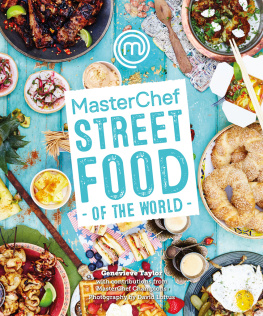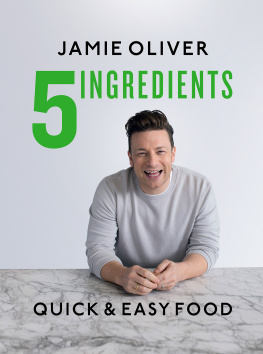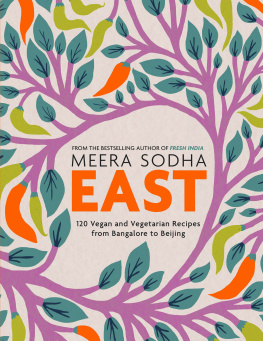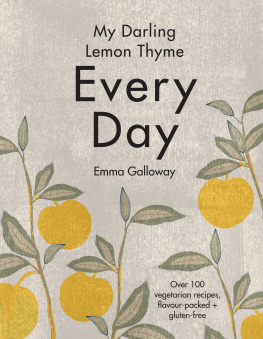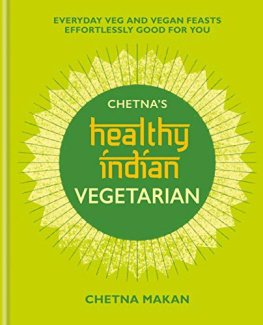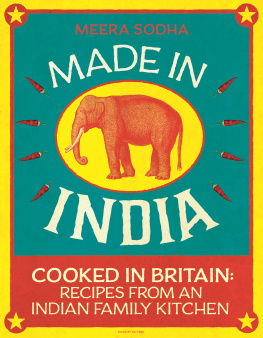FOR THE LOVE OF GOOD FOOD
FOR THE LOVE OF MY LIFE, HUGH
CONTENTS
ALTERNATIVE CONTENTS
GREAT FIRST-TIMER RECIPES
MIDWEEK MEALS (UNDER MINUTES)
WEEKEND COOKING
FOR THE LUNCH BOX
FROM THE STORE CUPBOARD
BATCH OR FREEZER COOKING
FOR ALLOTMENT GLUTS
SEASONAL CONTENTS
Due to innovations in the way we grow, transport and store food, we can now get most things the whole year round, which has obvious benefits. But this can also take away the enormous pleasure of eating something when nature says it is in its prime. And every now and then, when you buy out of season, you can end up with something rather tasteless that you wish youd never bought in the first place.
Eating seasonally often feels exactly right. Broad beans, peas and asparagus taste perfect in spring when the promise of summer and sunshine is just round the corner. Big brutish roots, at their best after the first frosts, are great in curries or mashed up with spices, and feel comforting in the winter. With that in mind, here are some dishes to eat with the seasons.
SPRING
AUTUMN
SUMMER
WINTER
EVERY RECIPE TELLS A STORY
At the heart of every one of my recipes is a place called Gujarat. Its where, as long as anyone can remember, our family came from. And although my family has now settled in England, we are still Gujarati, and day in day out we talk, think and eat like Gujaratis.
Gujarat, a small state on the western coast of India, has had a very big impact on Indian food culture. It all started in BC when Emperor Ashoka banned the slaughter of any living animal in the name of peace. Since that time, the majority of the millions of Hindus in the state have been vegetarian. Over thousands of years, a rich and resourceful vegetable-first way of cooking has evolved. Home cooks, restaurant chefs and street-food stallholders alike have all been creating simple but extraordinary dishes, using just what grows on the land and is in season.
Walk the streets of Ahmedabad or Rajkot and youll come across simple but heavenly potato curries cooked with garlic, mustard seeds and tomatoes. Or sweetcorn cooked in a deeply savoury sauce of ground peanuts and yoghurt and aubergines that have been smoked over red coals until they become deeply mysterious and creamy.
Ive long been fascinated by how this limitation of not cooking with meat has been the catalyst for new ways of thinking about and cooking with often familiar ingredients. Take the humble chickpea, for example. In Gujarati hands it has been transformed into a variety of dishes of different textures and forms from the gossamer-like chickpea bread dhokla, studded with sesame and mustard seeds, to a silken handkerchief-like pasta called khandvi and even a meltingly soft fudge.
This is the Gujarati way: creative, fresh, and always vegetable first.
Although Gujarat in particular is famous for this, a similar story exists all across India. For hundreds of millions of people in India, vegetarianism is not a choice but a way of life.
I grew up here in England in a small farming village in Lincolnshire. Behind our house were fields bursting with potatoes, leeks, corn and chard, and down the road, rapeseed, mustard, cauliflower and all sorts of greens. Mum adopted and adapted, spicing all this produce to make our very own special dishes, from courgette kofta to runner bean bhajis, rhubarb chutney and even rainbow chard saag. With every dish, you could see the Gujarati resourcefulness and creativity at work.
When I moved from our little village to London twelve years ago, I continued to cook in much the same way as my mum had. As the years passed, I began to notice how my familys approach to cooking was so at odds with how most people thought about and experienced Indian food. While my family gravitated towards the fresh, the vibrant and the seasonal, Indian food in the UK was often heavy, swimming in brown sauce and lacking in variety.
Ive written Fresh India to follow Made in India because I want to show you another type of Indian food, one that is vegetable led and packed with bold flavours. This is the food I love, which is influenced by how Gujaratis think about food but also by each and every state of India and occasionally Sri Lanka too.
Some of the dishes in Fresh India have been passed down the generations in my family and havent seen the light of day outside our home until now. Many have come from my travels all over India and the people I have met along the way, from home cooks to street stall vendors, temple cooks to chefs in top restaurants.
Others have come from my experiments in the kitchen, taking classic Indian techniques and flavours and imagining something new. After all, Im sure Im not the only one who has wondered what an Indian salad could look and taste like.
This is a book all about vegetables, but whether you call it a vegetarian cookbook is up to you. Im aware Ive written it at a time when a change is taking place in our attitudes towards both meat and vegetables. More of us are questioning how we farm, how we treat animals and whether how we eat is sustainable, good for the environment and also for our health.
But my aim with this book is not to preach or to write only for vegetarians: it is to inspire you to cook a different, fresher, vegetable-led type of Indian food. To honour the seasons and what grows in our fields, and also to celebrate the way that hundreds of millions of Indians eat, and the Gujarati way of thinking.
Happy cooking.
Meera x
HELPFUL WEIGHTS + MEASURES
Ingredients vary in size and potency, but this is a good rough guide if youre substituting whole spices for ground, scaling up recipes or dont have a pair of scales to hand.
GENERAL
teaspoon = of a tablespoon = ml
tablespoon = teaspoons = ml
RICE + PULSES
Appetites will vary (so plan accordingly), but as a general rule allocate g of dry rice per person. As for pulses, allow g of the dried variety per person, or g of cooked.
SPICES
You might find the following measures helpful if grinding whole spices:
BLACK PEPPER
teaspoon of peppercorns = teaspoons of ground pepper
CARDAMOM
Approximately pods = teaspoon of ground cardamom
CORIANDER
teaspoon of coriander seeds = teaspoons of ground coriander
CUMIN
teaspoon of cumin seeds = teaspoons of ground cumin
FENNEL
teaspoon of fennel seeds = teaspoons of ground fennel
MUSTARD SEEDS
teaspoon of mustard seeds = teaspoons of ground mustard
NUTMEG
Next page

